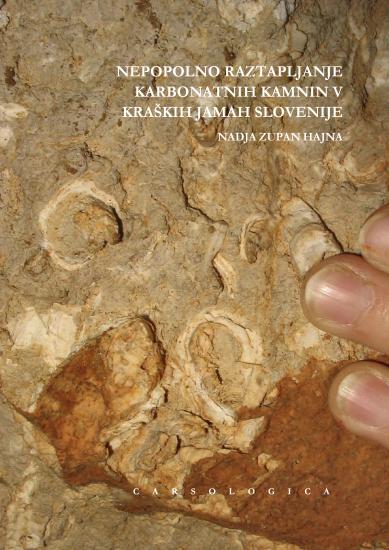
Author:
Nadja Zupan Hajna
Year:
2014
Research represent in this monograph (Incomplete Solution Of Carbonate Rocks In Karst Caves Of Slovenia) was dedicated to incomplete solution of limestones and dolomites in karst caves; that is to occurrence of thick, soft weathered zones of “soluble” residue of carbonate rocks. With field and laboratory analyses I have tried to find out what is happening within the carbonate rocks during weathering and why they do not dissolve completely. Solution penetrates into the rock along various textures and structures. Results of analysis have shown that during weathering limestones and dolomites become purer; Mg, Sr and U are leached out, structure of the rock becomes more porous. In the cases when surface of weathered rock come in contact with flowing water, the water tears exposed particles and transports them away. If water does not flow over the exposed particles fast enough, they remain attached to the wall of the cave. The ratio between corrosion and the mechanical erosion of carbonate rocks on cave passages walls is more significant for the formation of roughness and rocky relief on the wall than for the growth of the passage. Microorganisms are present in the processes, but it is not yet known if they contribute to the weathering. From research follows that zones of white porous rock on cave walls are a product of weathering and are not precipitated secondary minerals.
-
Author
-
Publishing House:
Založba ZRC
-
Publisher
-
ISBN
978-961-254-672-4
-
Year
2014
-
Series
Carsologica e1
Language(s)
-
Specifications
internet publication pdf 222 pages
-
E-publications
05. 12. 2019
-
Permalink